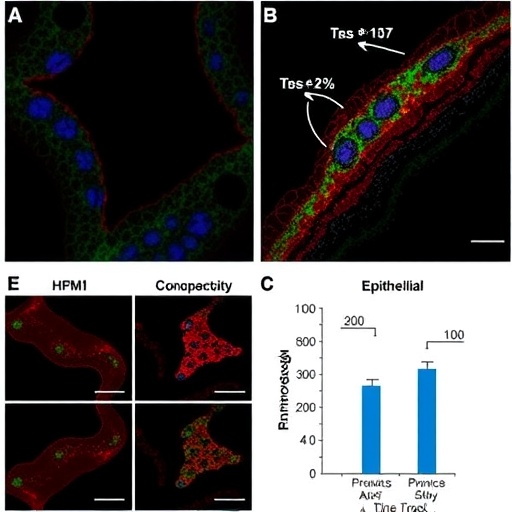A CRCHUM researcher paves the way for the widespread use of this new operation
Every day, 78 Canadians receive a diagnosis of lung cancer, the most deadly form of cancer in the country. Some of them will have one of the lobes of a lung removed by thoracotomy, a common, but risky surgical procedure that requires months of recovery. However, a less invasive and safer surgical technique exists and could be used more widely.
In a large international clinical study presented at the 99th Annual Meeting of the American Association for Thoracic Surgery, Dr. Moishe Liberman, a thoracic surgeon and researcher at the University of Montreal Hospital Research Centre (CRCHUM), and his team showed that thoracoscopic lobectomy–video-assisted thoracoscopic surgery (VATS)–combined with pulmonary artery sealing using an ultrasonic energy device reduced the risk of post-operative bleeding, complications and pain.
Unlike surgery with thoracotomy, which involves making a 25 cm incision in the patient’s chest and cutting the ribs, a VATS procedure requires small incisions. A miniature video camera is inserted through one of the incisions. In both types of surgical interventions, there is a risk of bleeding because the branches of the pulmonary artery are very thin, fragile and are attached directly to the heart.
“Thanks to this clinical trial conducted in Canadian, American and British hospitals, we have shown that it is possible to safely seal pulmonary blood vessels through ultrasonic sealing and effectively control possible bleeding during a VATS procedure,” explained Dr. Liberman, an Associate Professor of Surgery at the University of Montréal.
Currently, only 15% of lobectomies around the world are performed by VATS, mainly because of the actual risks of major bleeding or surgeons’ perception of these risks.
“I truly hope that the results of our clinical trial will reassure surgeons about the technical feasibility and safety of this operation and will encourage them to adopt it. A large number of patients could benefit from it and would be on their feet faster, with less pain,” indicated Dr. Liberman.
Next-generation device
After five years of preclinical research at the CRCHUM, trials conducted on animals, phase 1 and phase 2 clinical trials showing the safety of the surgical intervention, Dr. Liberman’s team has recently completed their large international phase 2 clinical trial launched in 2016.
It was able to evaluate the effectiveness of this new technique on 150 patients in eight hospitals across Canada, the United States and the United Kingdom. 139 of them underwent a lobectomy, while the remaining 11 underwent a segmentectomy (removal of a small part of the lung).
A total of 424 pulmonary artery branches were sealed during the study: 181 using surgical staplers, 4 with endoscopic clips and 239 using the HARMONIC ACE® +7 Shears, designed by the company Ethicon (Johnson & Johnson). With a 3-millimetre jaw at its tip, this high-tech “pistol” allows a surgeon to seal blood vessels by delivering ultrasonic energy.
According to the World Health Organization, lung cancer kills nearly 1.69 million people around the world every year.
###
This study received funding from Johnson & Johnson and the Centre hospitalier de l’Université de Montréal (CHUM). Identifier: NCT02719717
Further reading: “Prospective, Multi-Center, International Phase 2 Trial Evaluating Ultrasonic Energy for Pulmonary Artery Branch Sealing in VATS Lobectomy” by Dr. Moishe Liberman et al. in The Journal of Thoracic and Cardiovascular Surgery
About the CRCHUM
The University of Montreal Hospital Research Centre (CRCHUM) is one of North America’s leading hospital research centres. It strives to improve adult health through a research continuum covering such disciplines as the fundamental sciences, clinical research and public health. Over 1,861 people work at the CRCHUM, including 542 scientists and 719 students and research assistants.
chumontreal.qc.ca/crchum
About Université de Montréal
Deeply rooted in Montréal and dedicated to its international mission, Université de Montréal is one of the top universities in the French-speaking world. Founded in 1878, Université de Montréal today has 16 faculties and schools, and together with its two affiliated schools, HEC Montréal and Polytechnique Montréal, constitutes the largest centre of higher education and research in Québec and one of the major centres in North America. It brings together 2,500 professors and researchers and welcomes more than 60,000 students. umontreal.ca
Media contact – information and interviews
Lucie Dufresne or Isabelle Lavigne
Communication Advisor
Centre hospitalier de l’Université de Montréal (CHUM)
Pager : 514 860-7110
[email protected]/
Isabelle.lavigne.chumsss.gouv.qc.ca
Media Contact
Bruno Geoffroy
[email protected]




